Top 10 AI Governance Tools for Secure & Responsible AI Use [2025]

AI governance tools have evolved from compliance aids to core elements of enterprise strategy. As AI becomes integral to operations, these platforms keep innovation ethical, compliant, and secure, guiding development and decision-making with transparency, accountability, and purpose.
10 Best AI Governance Tools for Enterprises in 2025
With AI adoption accelerating across industries, governing how models and agents are developed and deployed is now essential. The following ten tools lead in helping enterprises manage risk, meet compliance standards, and promote responsible AI use.
1. Reco
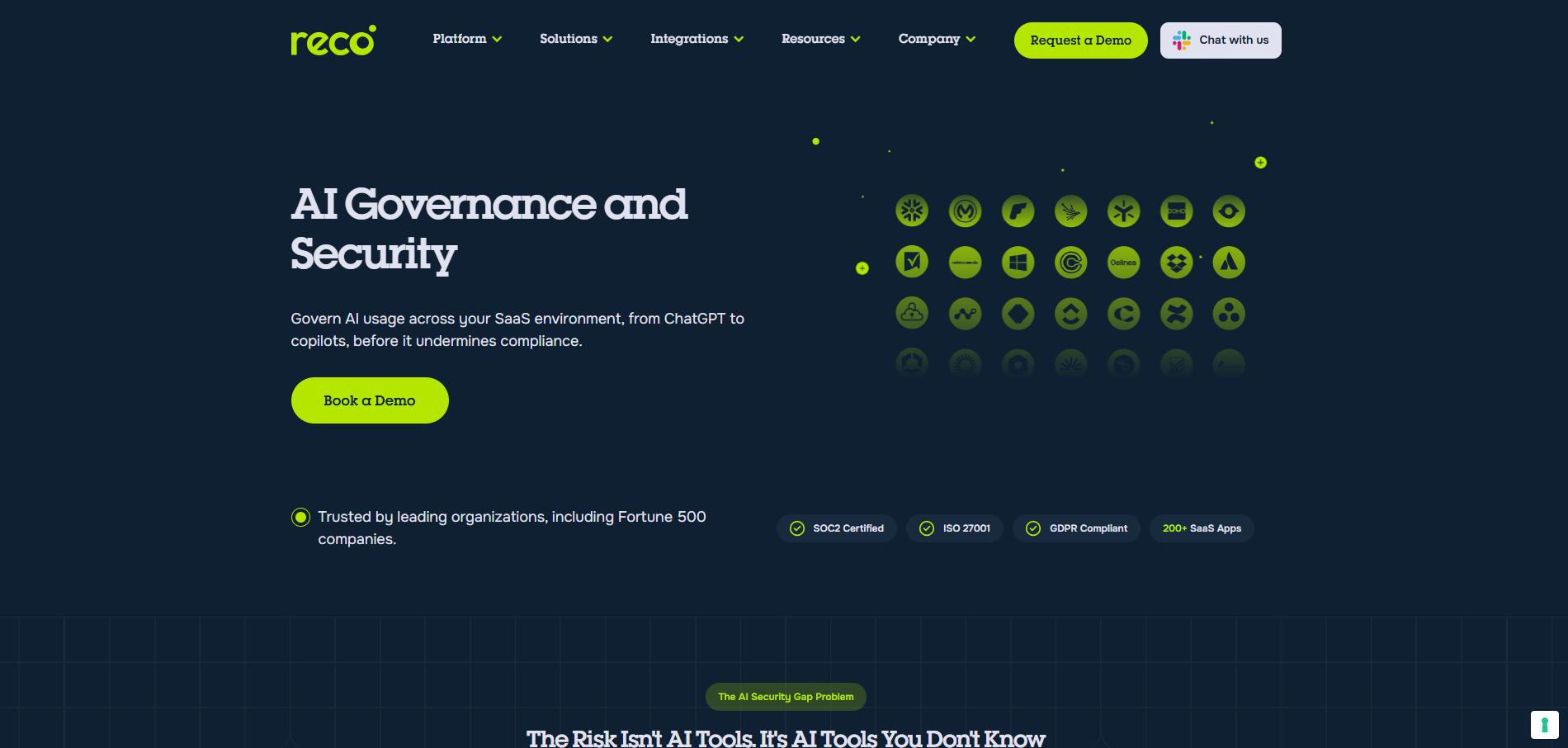
Reco provides an AI governance and security platform built for SaaS-first environments. It automatically discovers embedded generative AI features across enterprise SaaS platforms, maps the data flows, agents, and user permissions in a knowledge graph, and applies policy-based controls to prevent unauthorized access or data leakage through AI interactions. Its enforcement capabilities extend to prompts, responses, and SaaS-ecosystem integrations, which help organizations maintain control as shadow-AI grows.
Best for: Large organizations with extensive SaaS deployments and a need to govern AI usage across many tools.
Pricing: Quote-based on users and the number of integrations, offered directly and through the AWS Marketplace.
2. Credo AI
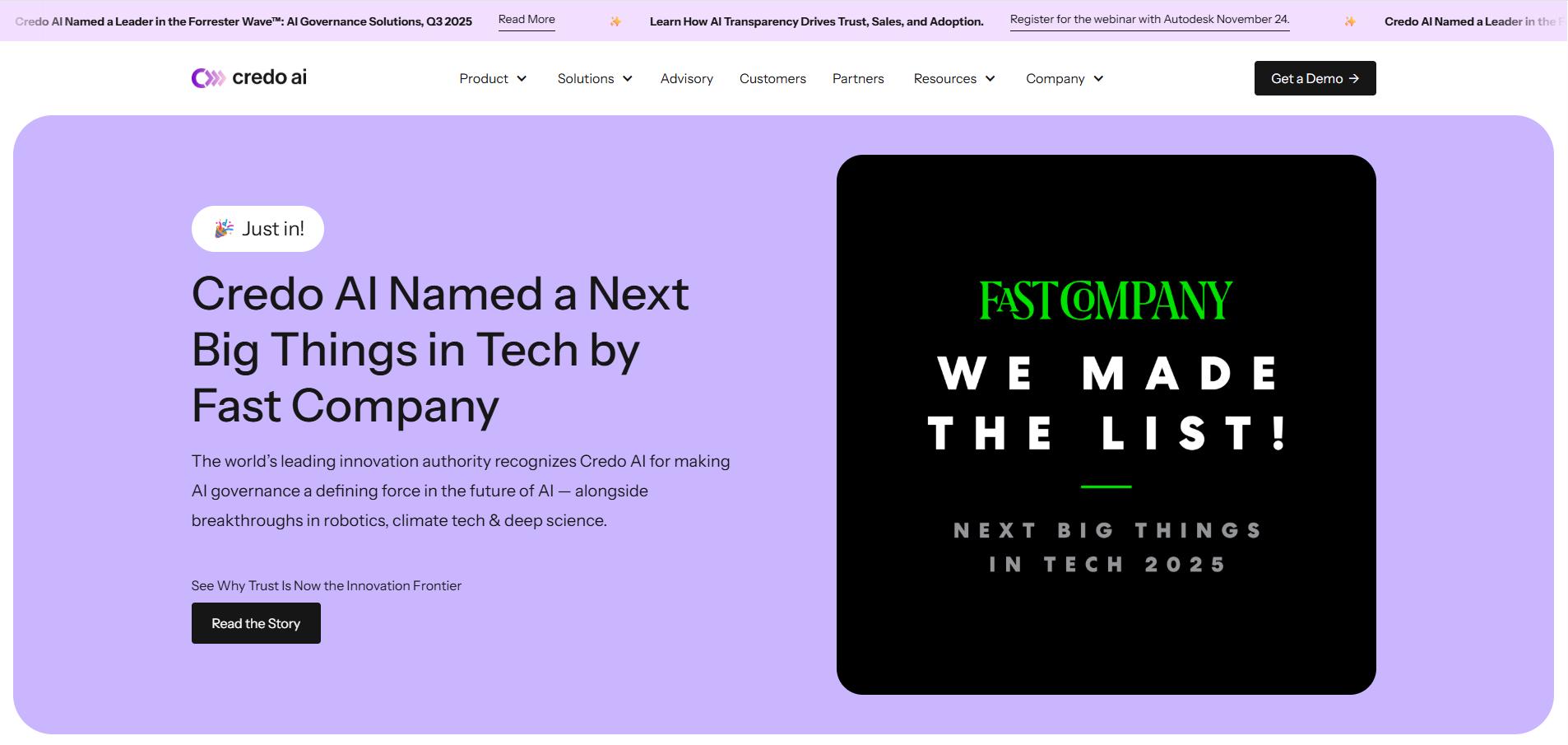
Credo AI is an enterprise-grade platform for AI governance, model risk management, and compliance automation. It supports registration of internal and third-party AI systems, includes policy workflows aligned with frameworks like the EU AI Act and ISO/IEC 42001, and produces audit-ready artifacts such as model cards, impact assessments, and vendor risk ratings. With dashboards and collaboration features across data science, product, legal, and compliance teams, it turns governance into a coordinated operational process.
Best for: Regulated industries or companies scaling multiple AI initiatives across business units that demand oversight and audit-ready governance.
Pricing: Contract-based via AWS Marketplace or direct with vendors.
3. Arthur AI
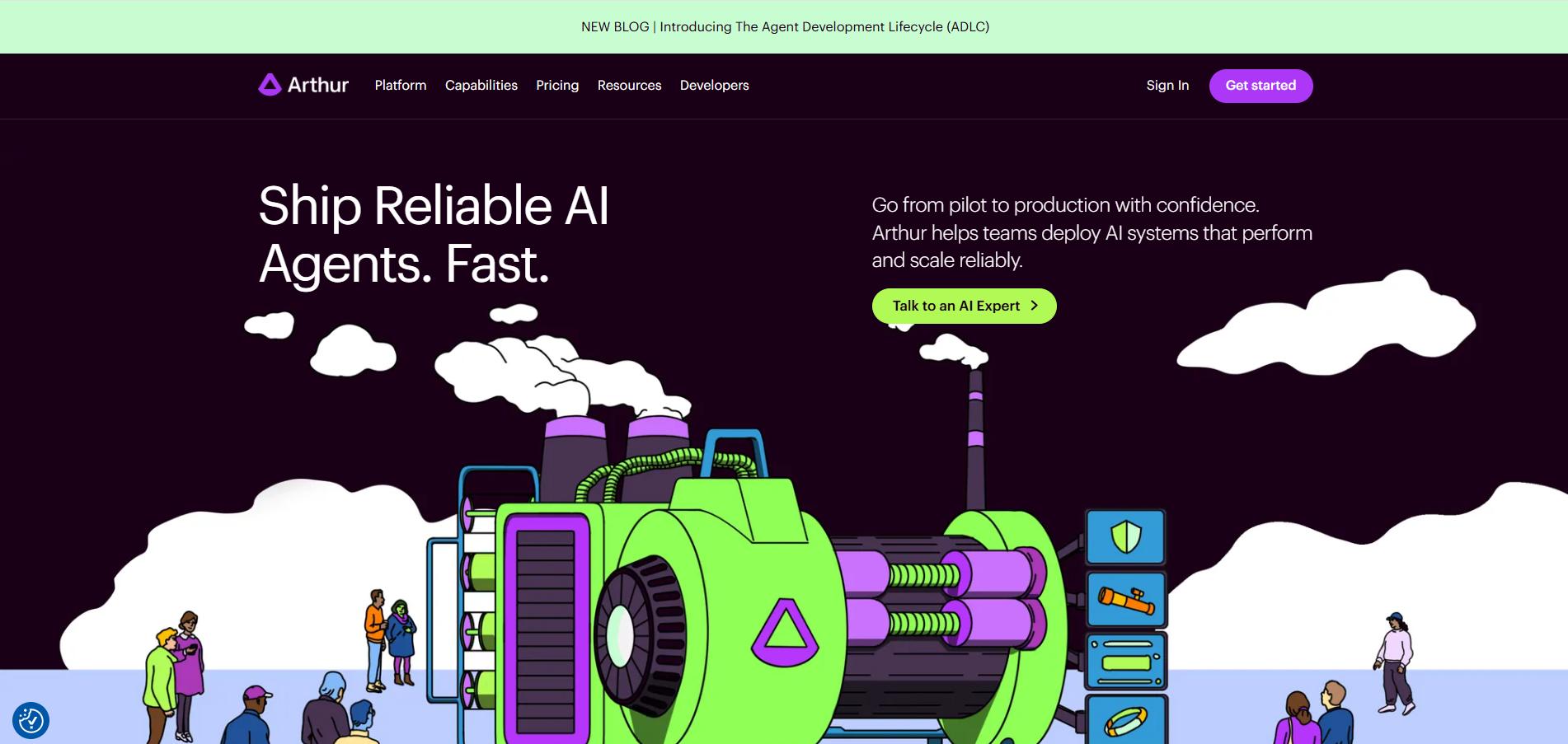
Arthur AI delivers a full-lifecycle AI performance, monitoring and governance platform designed to support both traditional machine-learning and generative-AI models. The platform enables model evaluation, real-time monitoring, drift detection, fairness checks, and transparent explanations of prediction behavior. In early 2025, it launched an open-source “Arthur Engine” for real-time model evaluation across ML and LLMs. This makes it suitable for model-centric teams focused on reliability, fairness, and production readiness rather than just high-level policy.
Best for: Teams prioritizing model performance, fairness, and lifecycle monitoring for both ML and generative AI systems.
Pricing: Free tier available. Premium and Enterprise plans with custom pricing.
4. Holistic AI
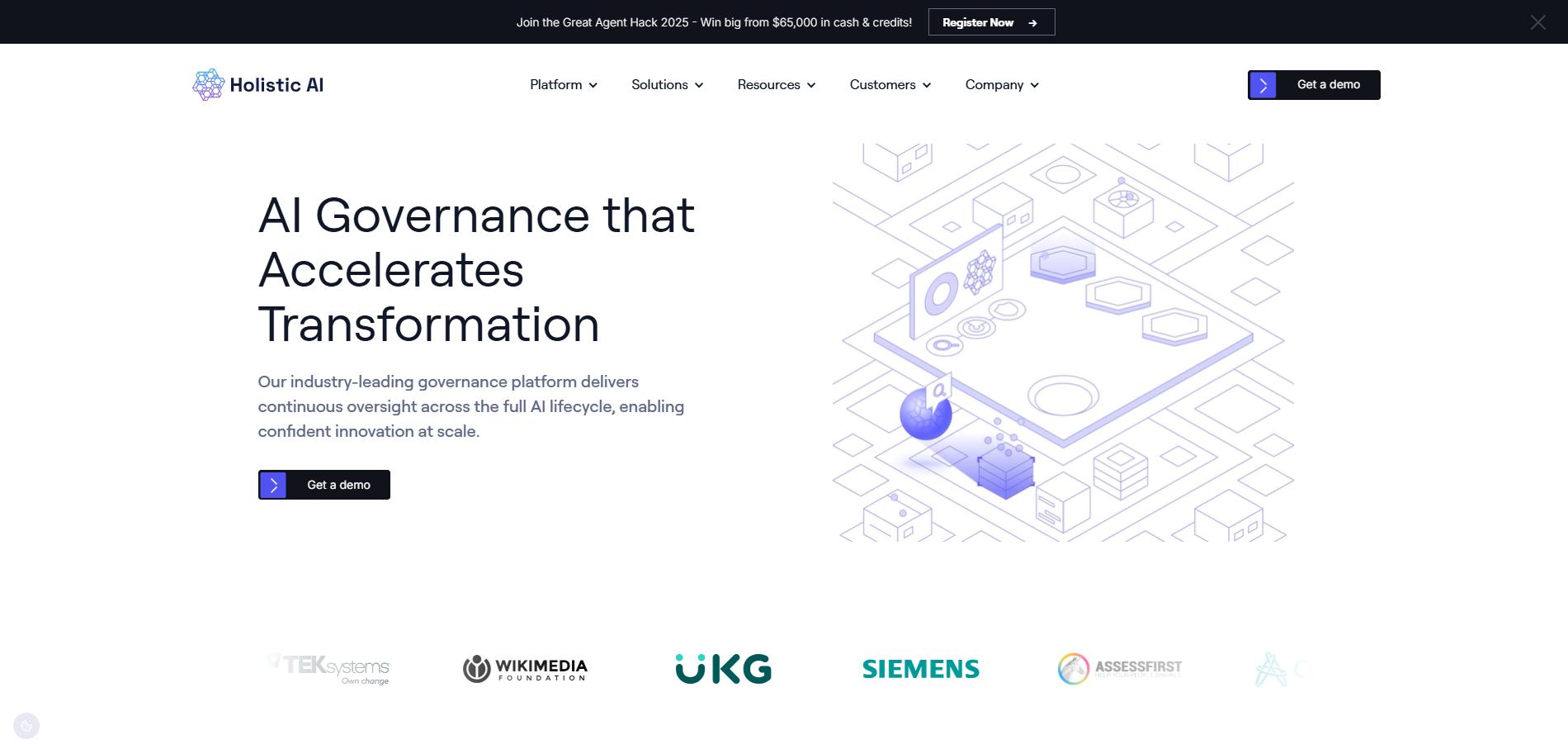
Holistic AI offers an end-to-end AI governance platform that covers inventory, risk management, compliance tracking, and performance optimization across the full AI lifecycle. Its enterprise-scale architecture identifies all AI systems (including shadow deployments), enforces guardrails, monitors bias and drift, and aligns AI initiatives with business and regulatory objectives. The platform emphasises modular entry points and scalability for organizations at different stages of AI maturity.
Best for: Enterprises seeking a unified, scalable governance framework for AI with full lifecycle oversight and enterprise governance workflows.
Pricing: Not publicly listed. Schedule a demo to obtain pricing.
5. Fiddler AI
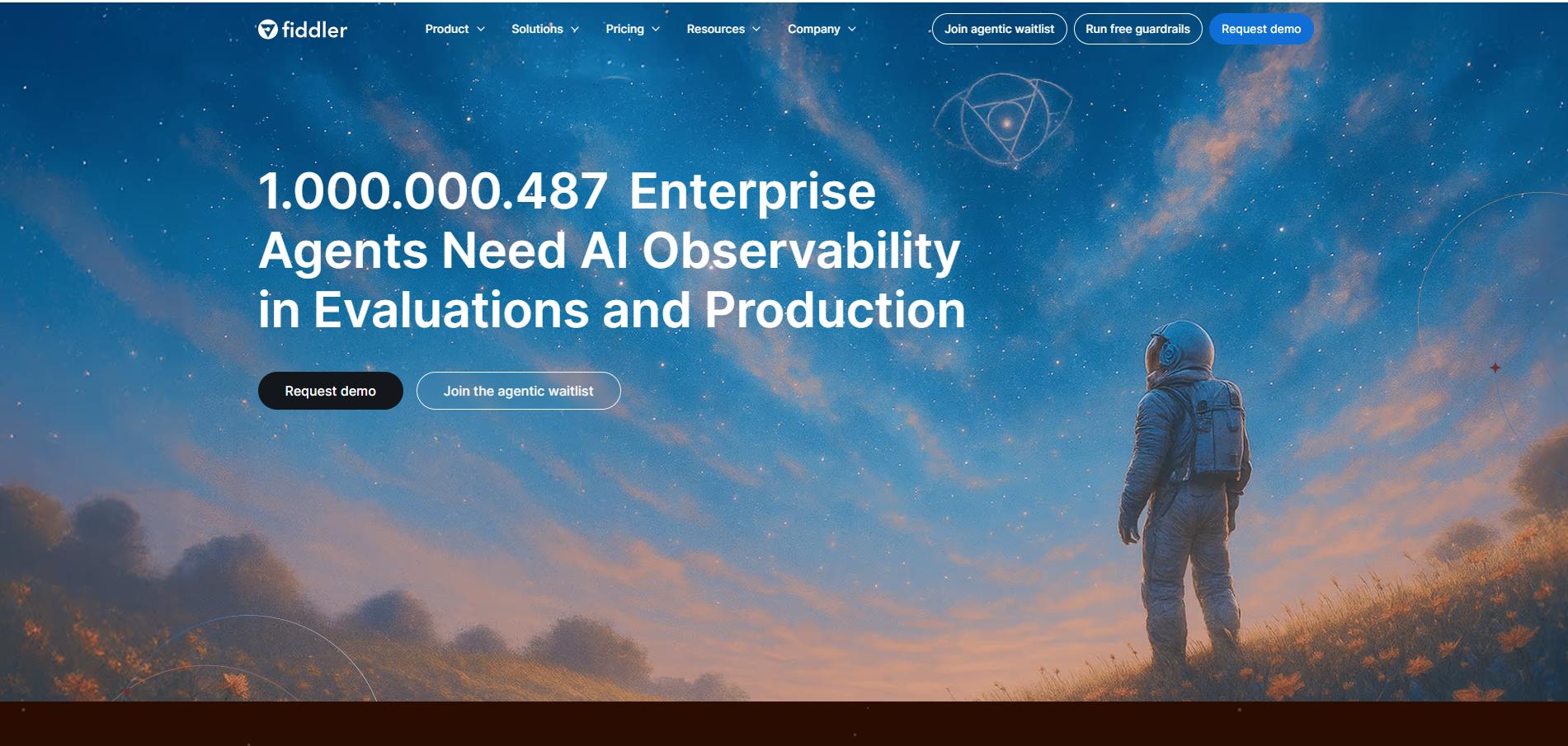
Fiddler AI is a unified AI observability platform that specializes in monitoring, explaining, and safeguarding machine-learning and large-language-model systems. It provides real-time bias, drift, and anomaly detection, an LLM observability layer (Fiddler Trust Service) with guardrails, and dashboards for both technical and non-technical stakeholders. These features enable organizations to ensure model transparency and operational reliability while meeting regulatory or fairness mandates.
Best for: Organizations that require strong explainability, real-time monitoring of LLMs and ML systems, and observability across distributed AI models.
Pricing: Plan-based with pricing determined by data volume, number of models, and explanations; SaaS and on-prem available.
6. DataRobot AI Governance

DataRobot AI Governance is part of the broader DataRobot platform and provides model-risk management, policy enforcement, compliance workflows, and security controls for predictive models, LLMs, agents, and AI applications. It supports multiple deployment environments, integrates with enterprise SIEM systems, and enables native checks for prompt injection, data leakage, and model fairness. The platform is especially suited for organizations that want governance as part of a wider AI and ML platform ecosystem.
Best for: Large enterprises that already use or plan to adopt DataRobot’s AI platform and require integrated governance, risk, and compliance controls.
Pricing: Enterprise contracts; listings indicate contract/external-license billing rather than public per-seat pricing.
7. IBM watsonx.governance

IBM watsonx.governance is a governance and oversight tool from IBM designed for enterprise AI deployments, covering lifecycle management, transparency, policy enforcement, and hybrid deployment models (cloud, on-prem, edge). It offers controls for responsible and explainable deployment of models and agents, supports agents and AI workloads at scale, and uses IBM’s enterprise integration capabilities to embed governance into broader enterprise architecture.
Best for: Large enterprises standardizing governance through IBM ecosystem tools, hybrid architecture, and global operations.
Pricing: Software pricing based on virtual processor cores (VPC); Essentials SaaS plan billed at USD $0.60 per resource unit.
8. ModelOp Center
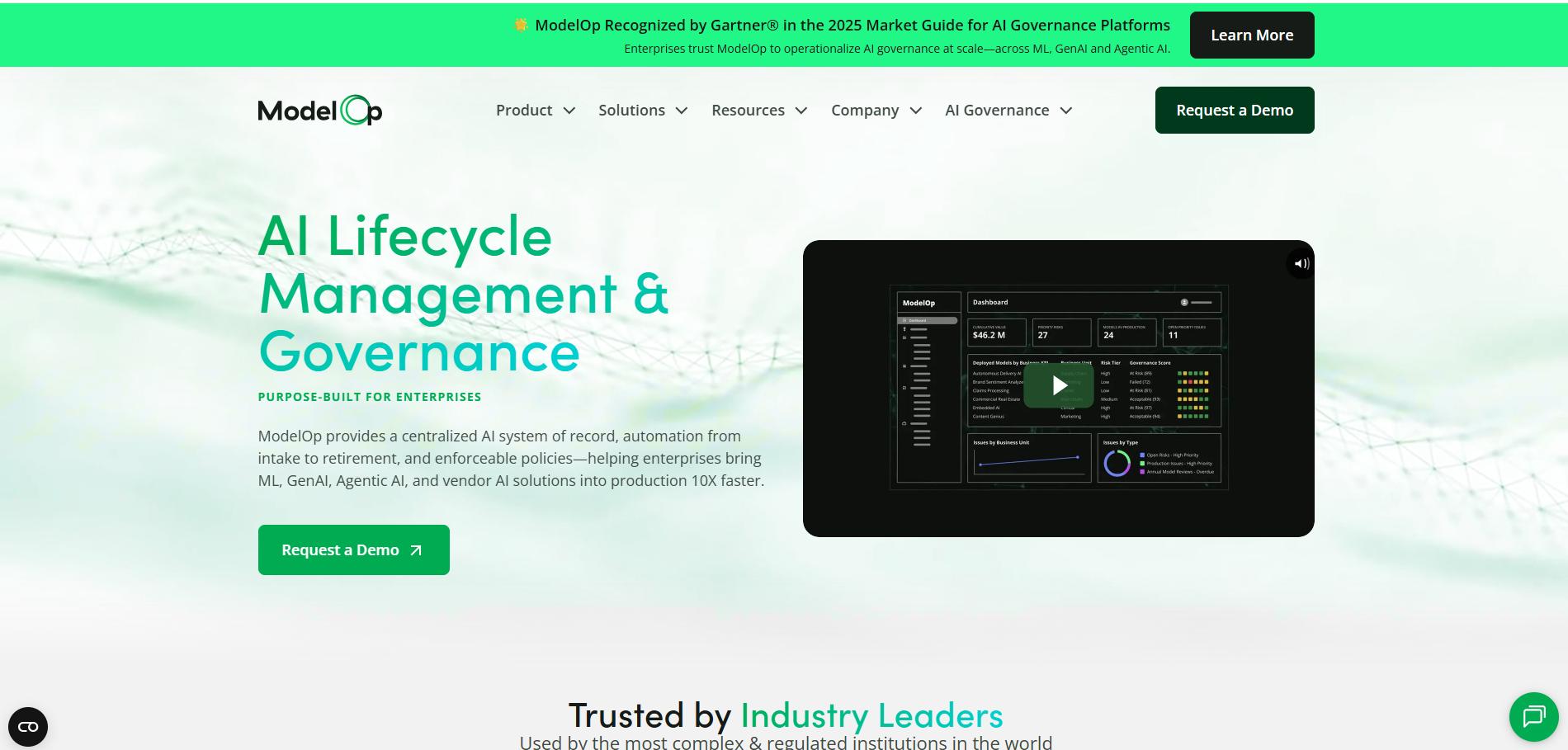
ModelOp Center provides an enterprise AI lifecycle management and governance platform that acts as a system of record for AI assets, covering intake, classification, deployment, monitoring, versioning, and retirement of models and agentic systems. It emphasises automation from intake to retirement, classification of risk, capturing of metadata, and enforceable governance workflows. This makes it suited for organizations seeking rigorous control across all types of AI and model deployments.
Best for: Enterprises with complex AI ecosystems, including ML models, agents, third-party models, and a need for a central governance system of record.
Pricing: Not publicly listed. Request a live demo to discuss pricing.
9. Monitaur
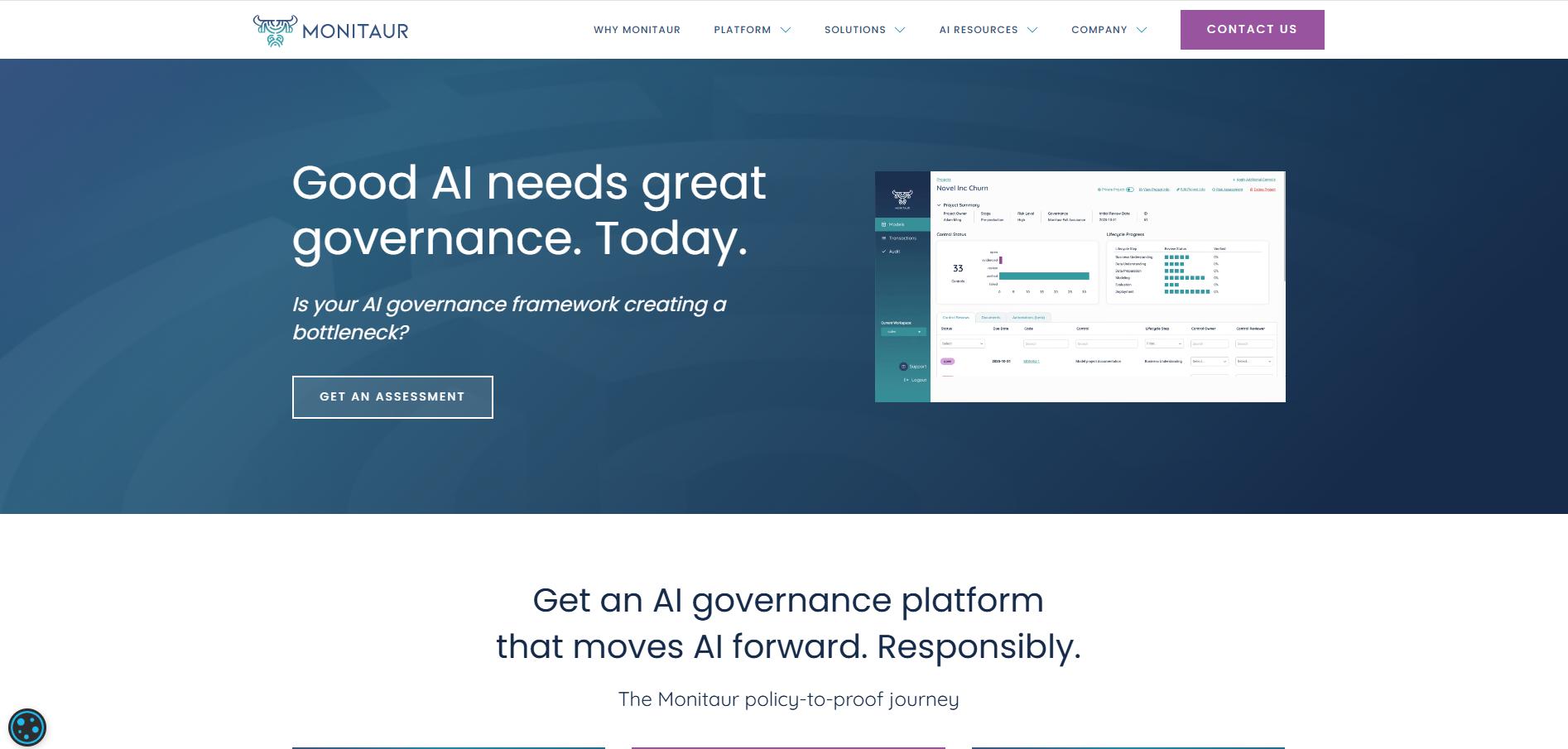
Monitaur is an AI governance platform that helps organizations in regulated industries define, manage, and automate AI governance across the entire lifecycle. It offers policy-to-proof management, model inventory, risk and compliance tools, and support for audits. It has particular recognition in insurance and financial services for its ability to unify teams and oversight through a central governance platform.
Best for: Regulated sectors such as insurance or finance that require audit-ready governance, clear model traceability, and operational risk controls.
Pricing: Not publicly listed. Contact Monitaur to discuss pricing.
10. TruEra

TruEra offers AI quality, observability, and governance capabilities focused on model diagnostics, fairness, explainability, and monitoring across predictive and generative AI systems. Its toolkit allows teams to diagnose performance issues, understand feature importance, detect bias, and monitor active models at scale. With SDKs, integrations, and dashboards, it helps organizations keep AI performance aligned with business outcomes and governance policies.
Best for: Data science and ML teams who prioritize model quality, diagnostics, and observability along with governance capabilities.
Pricing: Contract-based via AWS Marketplace or direct with vendors.
AI Governance Tools Comparison Table
Core Features of Leading AI Governance Tools
AI governance tools share foundational capabilities that enable oversight, accountability, and compliance across the entire AI lifecycle. The following core features define how leading platforms maintain control and transparency in 2025:
1. Data Classification and Sensitive Data Protection
AI governance tools automatically identify, classify, and tag sensitive data before it is used in model training or inference. They detect personal, financial, or proprietary information and apply protective controls such as masking, encryption, or restricted access. This ensures that sensitive datasets remain compliant with privacy regulations and corporate data-handling policies.
2. Policy Definition and Enforcement for AI Tool Usage
Enterprises can define rules that determine who can access AI systems, what data can be shared, and how prompts, outputs, or model results are handled. Governance tools enforce these policies automatically across applications and models, preventing unauthorized activity or shadow AI usage.
3. Continuous Monitoring and Risk Assessment
Most modern tools monitor model performance, data drift, bias, and anomalous behavior in real time. This enables organizations to detect compliance or operational risks early, generate alerts, and track model health continuously rather than relying on periodic audits.
4. Explainability and Model Transparency Features
Explainability capabilities allow teams to understand how AI models reach their conclusions. Dashboards and reports display reasoning trails, feature importance, and fairness metrics, helping stakeholders validate outcomes and meet regulatory transparency requirements.
5. Integration with Security and Compliance Systems
AI governance tools integrate with systems such as SIEM, IAM, DLP, and compliance management platforms. This creates a unified environment where AI oversight is connected to broader enterprise security and audit workflows, reducing silos and duplication of effort.
6. AI and LLM Access Control
As generative AI becomes part of everyday operations, governance platforms now include access controls for large language models. These cover prompt monitoring, user-level permissions, and restrictions on data shared with public models, ensuring responsible use of LLMs within enterprise boundaries.
Benefits of Using AI Governance Tools in the Enterprise
AI governance platforms bring structure and accountability to enterprise AI adoption. They ensure that innovation aligns with compliance, security, and ethical standards.
- Protect Sensitive Data in AI Workflows: These tools identify and classify personal, financial, or proprietary data before model use. They apply masking, encryption, and access controls to keep sensitive information protected and compliant.
- Prevent Unauthorized or Shadow AI Usage: They detect unapproved AI apps or integrations across the enterprise, preventing shadow use and reducing the risk of data exposure.
- Automate Compliance with AI Regulations (EU AI Act, ISO/IEC 42001): Governance software automates documentation, reporting, and risk assessments required under key frameworks, ensuring continuous compliance with global AI regulations.
- Enhance Accountability and Traceability: Audit logs, model cards, and metadata records reveal who built, trained, and deployed each model, making decision trails transparent and audit-ready.
- Align AI Use with Corporate Security Policies: Governance tools connect AI oversight with existing data protection and access management systems, ensuring that AI activity follows enterprise security policies.
Challenges in Implementing AI Governance Tools
Even with clear benefits, enterprises face practical challenges when deploying AI governance platforms. The table below highlights key issues and their effects on operations.
How to Choose the Right AI Governance Tool
Selecting an AI governance platform requires aligning security, compliance, and operational goals. The following points highlight key factors enterprises should consider when evaluating solutions.
- Evaluate Integration with Existing Data and Identity Systems: Choose a platform that connects seamlessly with existing IAM, DLP, and data classification systems. Integration ensures consistent policy enforcement and eliminates gaps between AI oversight and broader enterprise security.
- Prioritize Real-Time Monitoring and Policy Automation: Look for continuous monitoring features that track AI activity, model drift, and compliance events in real time. Automated policy enforcement reduces manual workload and ensures governance remains active across all environments.
- Ensure Vendor Compliance and Transparency Reporting: Confirm that the provider adheres to recognized standards such as ISO/IEC 42001, SOC 2, and GDPR. Transparent audit logs and reporting dashboards demonstrate how the platform maintains accountability for data and model governance.
- Consider Scalability and Ease of Deployment: Select a solution that can scale with your organization’s AI adoption. Cloud-based and modular platforms allow gradual expansion without complex migrations or costly reconfigurations.
- Align Governance Capabilities with Business Use Cases: Focus on tools that directly support your organization’s AI objectives - whether risk reduction, regulatory compliance, or ethical oversight - so governance becomes an enabler of innovation rather than a limitation.
How Reco Enables AI Governance at Scale
Reco combines AI security, visibility, and policy automation to help enterprises manage governance across SaaS ecosystems, LLMs, and generative AI tools. Its unified platform ensures responsible AI adoption without slowing innovation.
- Provides Unified Visibility Into AI and LLM Usage Across the Enterprise: Reco automatically discovers AI and LLM tools used across SaaS platforms, mapping data flows, permissions, and interactions in a unified dashboard that gives teams full oversight.
- Detects Oversharing and Policy Violations in Real Time: The platform monitors AI prompts and responses continuously to identify when sensitive or regulated data is exposed, alerting administrators instantly for corrective action.
- Classifies and Protects Sensitive Data in AI Prompts and Responses: Reco’s data classification engine detects personal or confidential information before it is sent to AI systems, applying masking or blocking policies to prevent leakage.
- Enforces AI-Specific Data Access Controls That Legacy DLP Tools Miss: Reco introduces context-aware controls tailored to AI tools, ensuring users only access approved AI systems and data sources based on identity, context, and risk level.
- Integrates Seamlessly with SIEM, IAM, and SaaS Security Systems: Reco connects with existing enterprise systems, including identity and access management, SIEM, and SaaS security platforms, enabling unified oversight and automated policy enforcement.
Conclusion
AI governance is quickly becoming the foundation of responsible enterprise growth. The right tools not only manage compliance but also build trust, enable safe innovation, and ensure AI serves clear business and ethical goals. As organizations expand their use of AI, governance platforms will define how innovation scales with confidence and integrity.
What is an AI governance tool, and why do enterprises need one?
- An AI governance tool helps organizations monitor, control, and document how artificial intelligence systems are developed and used.
- It ensures that AI models operate ethically, comply with regulations, and protect sensitive data.
- Enterprises rely on these tools to maintain transparency, reduce risk, and align AI initiatives with corporate and regulatory requirements.
How do AI governance tools ensure compliance with regulations like the EU AI Act or ISO/IEC 42001?
These platforms provide built-in policy frameworks, automated documentation, and reporting features that align with recognized standards. They generate audit trails, perform risk assessments, and manage model lifecycle data to ensure that AI systems meet the transparency, accountability, and risk management requirements defined by frameworks such as the EU AI Act and ISO/IEC 42001.
What challenges do organizations face when implementing AI governance solutions?
Common challenges include inconsistent data classification, fragmented visibility across multiple AI systems, integration complexity with existing security frameworks, and adapting to evolving regulatory expectations. Organizations must also balance governance controls with flexibility to encourage responsible innovation.
How does Reco help monitor and control sensitive data shared with AI tools like ChatGPT or Copilot?
Reco provides real-time visibility and enforcement to protect sensitive information in generative AI interactions through:
- Continuous monitoring of prompts and outputs to detect policy violations.
- Automated classification and masking of personal or confidential data before exposure.
- Alerts and reports that highlight oversharing risks and user behavior trends.
Can Reco integrate with existing DLP, SIEM, and identity systems for unified AI oversight?
Yes. Reco is designed to work alongside existing enterprise security and compliance tools through:
- Seamless integrations with SIEM, IAM, and DLP systems.
- Centralized dashboards unifying AI, SaaS, and data visibility.
- API-based interoperability for automated enforcement and reporting.



















.svg)

